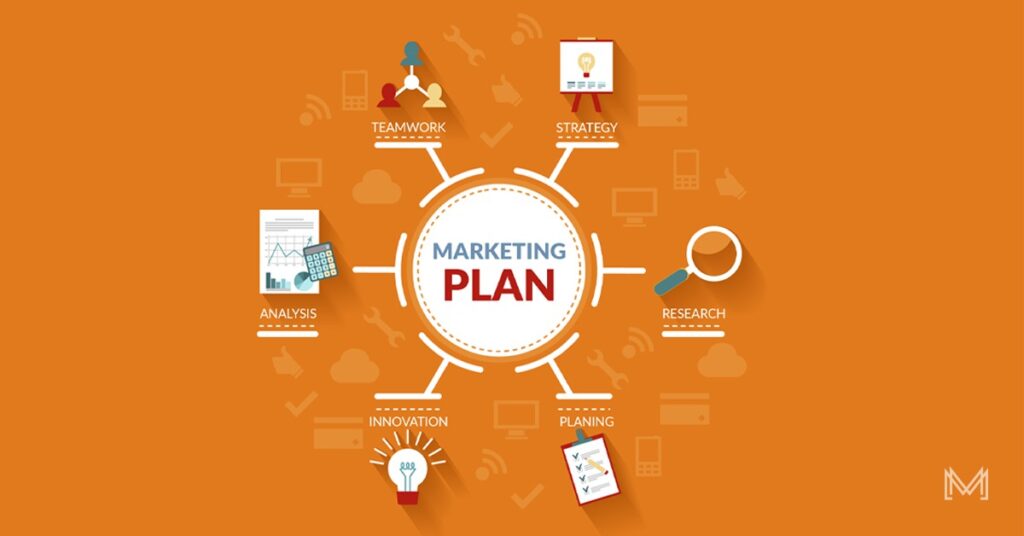Unlocking Growth: The Developing a Marketing Plan 8 Essential Purposes
In the dynamic world of business, a well-crafted marketing plan is no longer a mere suggestion; it’s a critical lifeline for survival and success. Developing a marketing plan it’s the roadmap that guides your business through the treacherous terrain of competition, ensuring you reach your target audience, build brand loyalty, and ultimately drive sales. But why is a marketing plan so important? What are the fundamental reasons why every business, from the small startup to the established corporation, needs one?
We’re diving deep into the eight core purposes of a marketing plan, revealing how it becomes your strategic weapon for conquering the market. Let’s unpack these crucial components and understand how they fuel your business’s growth.
Defining Your Mission: Setting a Clear Direction
Imagine a ship sailing without a compass. It might drift aimlessly, never reaching its intended destination. Similarly, a business without a defined mission can easily lose its way in the vast ocean of competition. Your marketing plan acts as that crucial compass, providing direction and focus.
It’s the first step to creating a compelling vision for your business. What are your core values? What unique offerings do you bring to the market? What are your aspirations for growth? Your marketing plan articulates your goals, setting the stage for aligning your efforts towards a shared vision.
Example:
Let’s say your business is a budding clothing brand aiming to empower women through fashion. Your mission statement could be: “To empower women by offering stylish and sustainable clothing that celebrates individuality and promotes self-confidence.” This mission guides your entire marketing plan, ensuring that all marketing decisions align with this core value.

Pinpointing Your Target Audience: Who Are You Speaking To?
Marketing is a conversation, but you can’t have a meaningful conversation if you don’t know who you’re talking to. Your marketing plan is where you pinpoint your target audience, understanding their needs, desires, and motivations.
Think of it as creating detailed customer profiles. What are their demographics? Their interests? Their pain points? Having more audience knowledge helps you create targeted messages that resonate.
Example:
If you’re launching a new fitness app, understanding your target audience is key. Are you targeting millennials who want quick and accessible workouts? Or are you aiming for older adults seeking gentle exercises for joint health? Each target audience requires a different approach, and your marketing plan should outline strategies to reach each group effectively.
Setting Measurable Goals: Tracking Progress and Success
A successful marketing plan isn’t just about creating a beautiful document—it’s about taking action and tracking results. This is where setting clear, measurable goals comes into play.
Your marketing plan should outline specific objectives you want to achieve. These could be anything from increasing website traffic to generating leads, boosting brand awareness, or driving sales. Each goal needs to be quantifiable, allowing you to track progress and measure the success of your marketing initiatives.
Example:
Your goal might be to increase website traffic by 20% within the next quarter. This goal is measurable, allowing you to track progress and see if your marketing efforts are driving the desired results.
Mapping Your Marketing Strategies: The Roadmap to Success
Now that you know your mission, target audience, and goals, it’s time to develop the strategies you’ll use to achieve them. Your marketing plan is where you outline these strategies, outlining the specific tactics you will employ to reach your target audience and achieve your objectives.
This section will detail your chosen marketing channels—social media, email marketing, content marketing, and paid advertising—and explain how you’ll use each channel to achieve your goals. It’s the blueprint for your marketing efforts, ensuring every action you take aligns with your overall strategy.
Example:
If your goal is to increase website traffic by 20%, your marketing plan might outline several strategies:
- Content marketing involves creating valuable blog posts, articles, and videos that attract your target audience to your website.
- SEO optimisation: optimising your website for search engines and ensuring that your content is easily discoverable by potential customers.
- Social media marketing involves engaging with your target audience on platforms like Facebook, Instagram, and Twitter to drive traffic to your website.
- Paid advertising: running targeted ads on platforms like Google Ads and Facebook Ads to reach your ideal customers.
Defining Your Budget: Making Wise Investments
Marketing isn’t free. It requires resources, and your marketing plan needs to outline how you’ll allocate your budget effectively. This section outlines your spending on each marketing activity, ensuring you’re making wise investments that will yield the greatest return.
It’s about prioritising your resources and allocating them to the strategies most likely to drive the greatest impact. You can’t afford to waste money on ineffective tactics. Your marketing plan helps you make informed decisions about where to spend your resources.
Example:
Your marketing plan might allocate a certain percentage of your budget to paid advertising, content creation, social media management, or influencer marketing. This breakdown helps you track your expenses and ensure you’re staying within your budget while maximising your return on investment.
Identifying Your Competitors: Understanding the Landscape
In the business world, you’re never alone. There are always other players vying for the same market share. Understanding your competition is crucial for crafting a successful marketing plan.
This section of your marketing plan analyses your key competitors, understanding their strengths and weaknesses. What are they doing well? What are their marketing strategies? How can you differentiate yourself and gain a competitive edge?
Example:
If you’re a new coffee shop opening in a bustling neighbourhood, you’ll want to understand your competition. What other coffee shops are in the area? What are their pricing, offerings, and marketing strategies? Analysing your competition allows you to identify opportunities to differentiate yourself and attract customers to your shop.
Anticipating Challenges: Staying Agile and Adaptable
No marketing plan is perfect. The market is constantly evolving, and unforeseen challenges can arise. Your marketing plan should be a living document, adaptable to changing market conditions. This section identifies potential challenges and outlines strategies to address them.
It’s about thinking proactively, anticipating potential obstacles, and developing contingency plans to mitigate risk. Being agile and adaptable is crucial for success in the ever-changing world of marketing.
Example: Developing a Marketing Plan
Your marketing plan might anticipate the potential for a competitor to launch a major advertising campaign. You could develop a counter-strategy, such as increasing your own advertising budget or launching a targeted social media campaign to stay ahead of the competition.
Tracking and Analysing Your Results: Continuous Improvement
Finally, a successful marketing plan isn’t a one-time event. It’s an ongoing process of tracking results, analysing performance, and making adjustments to optimise your efforts.
This section of your marketing plan outlines how you’ll track the effectiveness of your strategies. What metrics will you use to measure success? How will you analyse the data to identify areas for improvement?
Example:
You might track website traffic, social media engagement, lead generation, and conversion rates to understand how your marketing efforts are performing. You can then use this data to refine your strategies, allocate your budget more effectively, and optimise your overall marketing plan.
The power of a well-crafted marketing strategy is immense.
In the fast-paced world of business, a well-crafted marketing plan is no longer a luxury; it’s a necessity. It gives you the structure, focus, and adaptability you need to navigate the complex landscape of competition and achieve your business goals.
By defining your mission, understanding your target audience, setting measurable goals, mapping your strategies, defining your budget, identifying your competitors, anticipating challenges, and tracking your results, your marketing plan becomes your strategic weapon for success. It’s the key to unlocking growth, building brand loyalty, and achieving your ultimate business aspirations.

Frequently Asked Questions
1. Is a marketing plan really necessary for every business, even small ones? Absolutely! While large corporations may have extensive marketing departments and elaborate plans, even small businesses can benefit tremendously from a well-structured marketing plan. It provides focus, clarity, and a roadmap for making smart decisions with limited resources. A plan helps you prioritise your efforts, avoid wasting money on ineffective tactics, and measure your progress.
2. How detailed should my marketing plan be? The level of detail in your marketing plan depends on your business size, resources, and goals. A small startup might have a simpler plan focusing on key strategies, while a larger company with multiple product lines might require a more comprehensive document with detailed tactics for each product. The key is to have a plan that is thorough enough to guide your decisions but flexible enough to adapt to changing market conditions.
3. What are some key things to include in my marketing plan?
Your marketing plan should include the following essential elements: Developing a Marketing Plan
- Mission statement: What is your business’s purpose and core values?
- Target audience: Who are you trying to reach with your marketing efforts?
- Marketing goals: What specific objectives do you want to achieve?
- Marketing strategies: How will you achieve your goals? Examples of effective marketing strategies include content marketing, social media, paid advertising, and email marketing.
- Budget: How will you allocate your marketing resources?
- Competitor analysis: Who are your competitors, and what are their strengths and weaknesses?
- Challenges and contingency plans: What potential obstacles might you face, and how will you address them?
- Tracking and analysis: How will you measure the success of your marketing efforts?
4. How often should I review and update my marketing plan? It’s best to review and update your marketing plan regularly, at least quarterly or even more frequently if you’re operating in a fast-changing industry. The market is constantly evolving, so your plan should adapt to new trends, changes in your target audience, and competitor activity. Stay agile and responsive to ensure your plan remains relevant and effective.
5. Is there a template or resource I can use to create my marketing plan? Yes! There are numerous templates and resources available online to help you create a marketing plan. A simple Google search will yield a variety of options. You can also find helpful guides and articles from reputable marketing organisations and platforms. Remember, it’s more important to have a plan than to have a perfect plan. Start with a basic framework and adapt it to your specific needs and goals.


